
Southern right whale eyeballing the camera up close, Eubalaena australis. Whale lice can be seen clearly in the folds and crevices around the whales eye and lip groove.
Species: Southern Right Whale, Eubalaena australis
Location: Puerto Piramides, Chubut, Argentina
Image ID: 38401
Species: Southern Right Whale, Eubalaena australis
Location: Puerto Piramides, Chubut, Argentina
Image ID: 38401

Parasitic zoanthid anemones cover, encrust and overwhelm a golden gorgonian. The gorgonian on the left has been completely parasitized by zoanthid anemones, while the gorgonian to the right remains free of zoanthids (for now). A garibaldi swims below the two sea fans. The golden gorgonian is a filter-feeding temperate colonial species that lives on the rocky bottom at depths between 50 to 200 feet deep. Each individual polyp is a distinct animal, together they secrete calcium that forms the structure of the colony. Gorgonians are oriented at right angles to prevailing water currents to capture plankton drifting by.
Species: California golden gorgonian, Luminescent parazoanthid, Zoanthid anemone, Giant kelp, Muricea californica, Parazoanthus lucificum, Savalia lucifica, Macrocystis pyrifera
Location: San Clemente Island, California
Image ID: 38493
Species: California golden gorgonian, Luminescent parazoanthid, Zoanthid anemone, Giant kelp, Muricea californica, Parazoanthus lucificum, Savalia lucifica, Macrocystis pyrifera
Location: San Clemente Island, California
Image ID: 38493

Red gorgonian on rocky reef, below kelp forest, underwater. The red gorgonian is a filter-feeding temperate colonial species that lives on the rocky bottom at depths between 50 to 200 feet deep. Gorgonians are typically oriented at right angles to prevailing water currents to capture plankton drifting by.
Species: Red gorgonian, Leptogorgia chilensis, Lophogorgia chilensis
Location: San Clemente Island, California
Image ID: 38496
Species: Red gorgonian, Leptogorgia chilensis, Lophogorgia chilensis
Location: San Clemente Island, California
Image ID: 38496

Red Gorgonians form a lush colorful garden below a submarine arch, while two scuba divers pass through the opening to the cavern.
Species: Red gorgonian, Leptogorgia chilensis, Lophogorgia chilensis
Location: San Clemente Island, California
Image ID: 38497
Species: Red gorgonian, Leptogorgia chilensis, Lophogorgia chilensis
Location: San Clemente Island, California
Image ID: 38497

Drift kelp paddy floating on the ocean surface, San Diego.
Species: Giant kelp, Macrocystis pyrifera
Location: San Diego, California
Image ID: 38533
Species: Giant kelp, Macrocystis pyrifera
Location: San Diego, California
Image ID: 38533
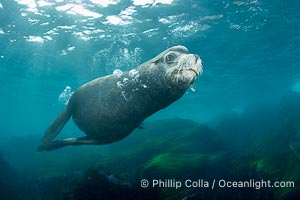
Huge California Sea Lion Male Underwater, a bull, patrolling his breeding harem and territory, Coronado Islands, Mexico. His sagittal crest, the bony bump on his head that distinguishes adult male sea lions, is clearly seen. This particular sea lion bears an orange tag on his left foreflipper, probably as a result of rescue and release as a young sea lion years earlier.
Species: California sea lion, Zalophus californianus
Location: Coronado Islands (Islas Coronado), Baja California, Mexico
Image ID: 38655
Species: California sea lion, Zalophus californianus
Location: Coronado Islands (Islas Coronado), Baja California, Mexico
Image ID: 38655

Ocean Sunfish swimming at the ocean surface in the Open Ocean.
Species: Ocean sunfish, Mola mola
Location: San Diego, California
Image ID: 39406
Species: Ocean sunfish, Mola mola
Location: San Diego, California
Image ID: 39406

Two Giant Black Sea Bass in a Courtship Posture, in Kelp at Catalina Island. In summer months, black seabass gather in kelp forests in California to form mating aggregations. Courtship behaviors include circling of pairs of giant sea bass, production of booming sounds by presumed males, and nudging of females by males in what is though to be an effort to encourage spawning.
Species: Giant black sea bass, Stereolepis gigas
Location: Catalina Island, California
Image ID: 39432
Species: Giant black sea bass, Stereolepis gigas
Location: Catalina Island, California
Image ID: 39432

Giant Black Sea Bass with Distinctive Identifying Black Spots that allow researchers to carry out sight/resight studies on the animals distributions and growth. Black sea bass can reach 500 pounds and 8 feet in length.
Species: Giant black sea bass, Stereolepis gigas
Location: Catalina Island, California
Image ID: 39433
Species: Giant black sea bass, Stereolepis gigas
Location: Catalina Island, California
Image ID: 39433

Spanish shawl nudibranch, Flabellinopsis iodinea, Midriff Islands, Sea of Cortez.
Species: Spanish shawl nudibranch, Flabellinopsis iodinea
Location: Islas San Lorenzo, Baja California, Mexico
Image ID: 40475
Species: Spanish shawl nudibranch, Flabellinopsis iodinea
Location: Islas San Lorenzo, Baja California, Mexico
Image ID: 40475

Scythe-mark butterflyfish, Prognathodes falcifer, Catalina Island.
Species: Scythe-mark butterflyfish, Prognathodes falcifer
Location: Catalina Island, California
Image ID: 40516
Species: Scythe-mark butterflyfish, Prognathodes falcifer
Location: Catalina Island, California
Image ID: 40516

California sea lion underwater, Sea of Cortez, Mexico.
Species: California sea lion, Zalophus californianus
Location: Sea of Cortez, Baja California, Mexico
Image ID: 31204
Species: California sea lion, Zalophus californianus
Location: Sea of Cortez, Baja California, Mexico
Image ID: 31204

California sea lion underwater at Los Islotes, Sea of Cortez, Mexico.
Species: California sea lion, Zalophus californianus
Location: Sea of Cortez, Baja California, Mexico
Image ID: 31206
Species: California sea lion, Zalophus californianus
Location: Sea of Cortez, Baja California, Mexico
Image ID: 31206
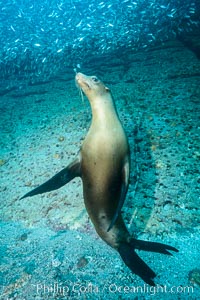
California sea lion underwater, Sea of Cortez, Mexico.
Species: California sea lion, Zalophus californianus
Location: Sea of Cortez, Baja California, Mexico
Image ID: 31207
Species: California sea lion, Zalophus californianus
Location: Sea of Cortez, Baja California, Mexico
Image ID: 31207

Sea lion underwater in beautiful sunset light.
Species: California sea lion, Zalophus californianus
Location: Sea of Cortez, Baja California, Mexico
Image ID: 31208
Species: California sea lion, Zalophus californianus
Location: Sea of Cortez, Baja California, Mexico
Image ID: 31208

Sea lion blowing underwater bubbles as it stands on its flippers.
Species: California sea lion, Zalophus californianus
Location: Sea of Cortez, Baja California, Mexico
Image ID: 31210
Species: California sea lion, Zalophus californianus
Location: Sea of Cortez, Baja California, Mexico
Image ID: 31210

California sea lion underwater, Sea of Cortez, Mexico.
Species: California sea lion, Zalophus californianus
Location: Sea of Cortez, Baja California, Mexico
Image ID: 31211
Species: California sea lion, Zalophus californianus
Location: Sea of Cortez, Baja California, Mexico
Image ID: 31211

Spectacular pristine tropical reef, including dendronephthya soft corals, sarcophyton leather corals and schooling Anthias fishes, pulsing with life in a strong current over a pristine coral reef. Fiji is known as the soft coral capitlal of the world.
Species: Anthias, Dendronephthya soft coral, Sarcophyton soft coral, Dendronephthya, Pseudanthias, Sarcophyton
Location: Namena Marine Reserve, Namena Island, Fiji
Image ID: 31309
Species: Anthias, Dendronephthya soft coral, Sarcophyton soft coral, Dendronephthya, Pseudanthias, Sarcophyton
Location: Namena Marine Reserve, Namena Island, Fiji
Image ID: 31309

Beautiful South Pacific coral reef, with gorgonian sea fans, schooling anthias fish and colorful dendronephthya soft corals, Fiji.
Species: Anthias, Black sun coral, Dendronephthya soft coral, Gorgonian, Dendronephthya, Gorgonacea, Pseudanthias, Tubastrea micrantha
Location: Fiji
Image ID: 31312
Species: Anthias, Black sun coral, Dendronephthya soft coral, Gorgonian, Dendronephthya, Gorgonacea, Pseudanthias, Tubastrea micrantha
Location: Fiji
Image ID: 31312

Spectacular pristine tropical reef with vibrant colorful soft corals. Dendronephthya soft corals, crinoids, sea fan gorgonians and schooling Anthias fishes, pulsing with life in a strong current over a pristine coral reef. Fiji is known as the soft coral capitlal of the world.
Species: Anthias, Black sun coral, Crinoid feather star, Dendronephthya soft coral, Gorgonian, Crinoidea, Dendronephthya, Gorgonacea, Pseudanthias, Tubastrea micrantha
Location: Vatu I Ra Passage, Bligh Waters, Viti Levu Island, Fiji
Image ID: 31313
Species: Anthias, Black sun coral, Crinoid feather star, Dendronephthya soft coral, Gorgonian, Crinoidea, Dendronephthya, Gorgonacea, Pseudanthias, Tubastrea micrantha
Location: Vatu I Ra Passage, Bligh Waters, Viti Levu Island, Fiji
Image ID: 31313

Spectacular display of pristine cabbage coral, Turbinaria reniformis, in Nigali Pass on Gao Island, Fiji.
Species: Cabbage coral, Tubinaria reniformis, Cabbage coral, Turbinaria reniformis
Location: Nigali Passage, Gau Island, Lomaiviti Archipelago, Fiji
Image ID: 31314
Species: Cabbage coral, Tubinaria reniformis, Cabbage coral, Turbinaria reniformis
Location: Nigali Passage, Gau Island, Lomaiviti Archipelago, Fiji
Image ID: 31314

Colorful Dendronephthya soft corals and schooling Anthias fish on coral reef, Fiji.
Species: Anthias, Black sun coral, Dendronephthya soft coral, Dendronephthya, Pseudanthias, Tubastrea micrantha
Location: Vatu I Ra Passage, Bligh Waters, Viti Levu Island, Fiji
Image ID: 31316
Species: Anthias, Black sun coral, Dendronephthya soft coral, Dendronephthya, Pseudanthias, Tubastrea micrantha
Location: Vatu I Ra Passage, Bligh Waters, Viti Levu Island, Fiji
Image ID: 31316
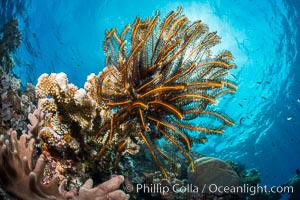
Crinoid (feather star) extends its tentacles into ocean currents, on pristine south pacific coral reef, Fiji.
Species: Crinoid feather star, Crinoidea
Location: Vatu I Ra Passage, Bligh Waters, Viti Levu Island, Fiji
Image ID: 31317
Species: Crinoid feather star, Crinoidea
Location: Vatu I Ra Passage, Bligh Waters, Viti Levu Island, Fiji
Image ID: 31317

Dendronephthya soft corals and schooling Anthias fishes, feeding on plankton in strong ocean currents over a pristine coral reef. Fiji is known as the soft coral capitlal of the world.
Species: Anthias, Dendronephthya soft coral, Dendronephthya, Pseudanthias
Location: Gau Island, Lomaiviti Archipelago, Fiji
Image ID: 31318
Species: Anthias, Dendronephthya soft coral, Dendronephthya, Pseudanthias
Location: Gau Island, Lomaiviti Archipelago, Fiji
Image ID: 31318

Dendronephthya soft corals and schooling Anthias fishes, feeding on plankton in strong ocean currents over a pristine coral reef. Fiji is known as the soft coral capitlal of the world.
Species: Anthias, Dendronephthya soft coral, Dendronephthya, Pseudanthias
Location: Namena Marine Reserve, Namena Island, Fiji
Image ID: 31319
Species: Anthias, Dendronephthya soft coral, Dendronephthya, Pseudanthias
Location: Namena Marine Reserve, Namena Island, Fiji
Image ID: 31319

Spectacular pristine tropical reef with vibrant colorful soft corals. Dendronephthya soft corals, crinoids, sea fan gorgonians and schooling Anthias fishes, pulsing with life in a strong current over a pristine coral reef. Fiji is known as the soft coral capitlal of the world.
Species: Anthias, Crinoid feather star, Dendronephthya soft coral, Gorgonian, Crinoidea, Dendronephthya, Gorgonacea, Pseudanthias
Location: Namena Marine Reserve, Namena Island, Fiji
Image ID: 31320
Species: Anthias, Crinoid feather star, Dendronephthya soft coral, Gorgonian, Crinoidea, Dendronephthya, Gorgonacea, Pseudanthias
Location: Namena Marine Reserve, Namena Island, Fiji
Image ID: 31320
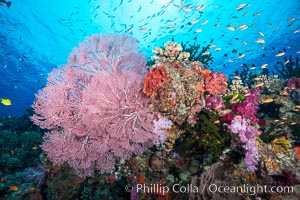
Beautiful South Pacific coral reef, with Plexauridae sea fans, schooling anthias fish and colorful dendronephthya soft corals, Fiji.
Species: Anthias, Dendronephthya soft coral, Gorgonian, Sea fan, Dendronephthya, Gorgonacea, Plexauridae, Pseudanthias
Location: Namena Marine Reserve, Namena Island, Fiji
Image ID: 31321
Species: Anthias, Dendronephthya soft coral, Gorgonian, Sea fan, Dendronephthya, Gorgonacea, Plexauridae, Pseudanthias
Location: Namena Marine Reserve, Namena Island, Fiji
Image ID: 31321
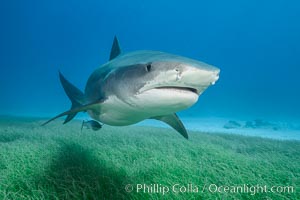
Tiger shark close up view, including nostrils and ampullae of Lorenzini.
Species: Tiger shark, Galeocerdo cuvier
Location: Bahamas
Image ID: 31901
Species: Tiger shark, Galeocerdo cuvier
Location: Bahamas
Image ID: 31901

Steller sea lion underwater, Norris Rocks, Hornby Island, British Columbia, Canada.
Species: Steller sea lion, Eumetopias jubatus
Location: Hornby Island, British Columbia, Canada
Image ID: 32661
Species: Steller sea lion, Eumetopias jubatus
Location: Hornby Island, British Columbia, Canada
Image ID: 32661
